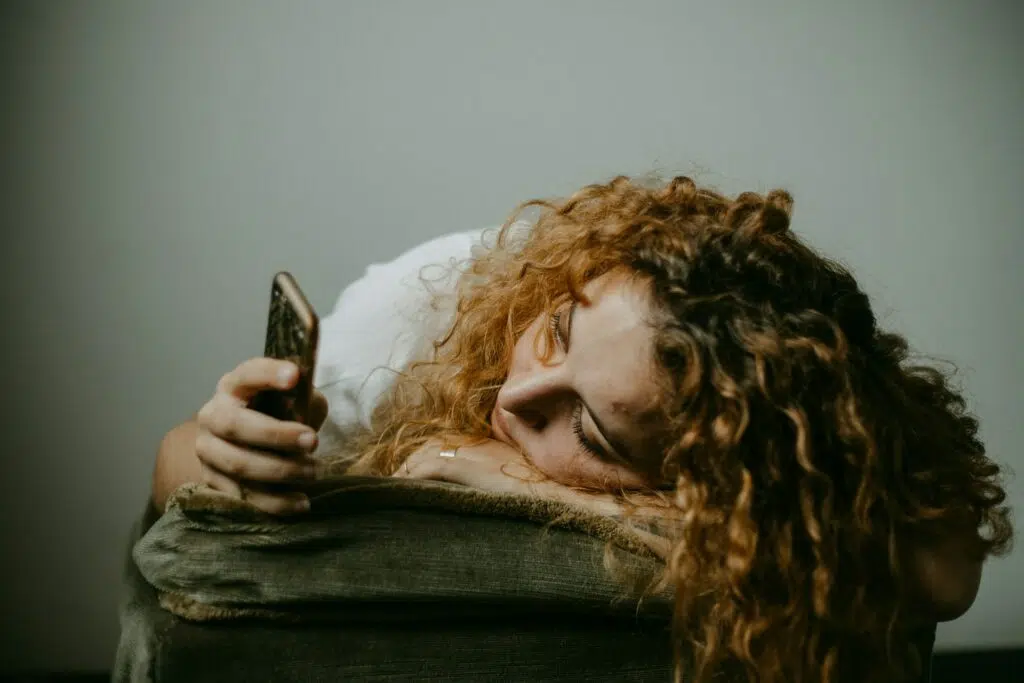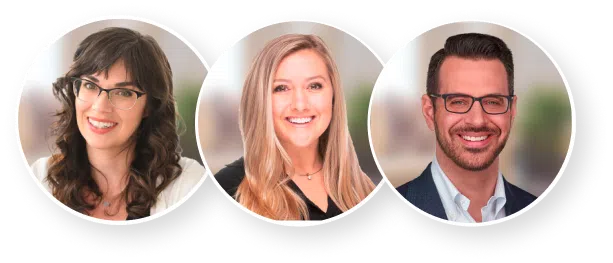Finding a Bilingual Therapist in New York City

In a city where people speak over 200 different languages, finding a bilingual therapist in New York is more than a convenience, it can be a game-changer for mental health. Nearly half of New Yorkers speak a language other than English at home, which means many individuals feel more comfortable expressing their deepest emotions in Spanish, Korean, French, or any other mother tongue. This article will explore how therapy in your native language can improve your mental health experience, address common challenges bilingual New Yorkers face, and guide you on finding a bilingual-speaking therapist who meets your needs.
The Power of Therapy in Your Native Language
Language is deeply tied to emotion. Trying to pour out your heart in a second language can feel like describing a colorful painting in black-and-white, something is always lost in translation. Words in our first language often carry more emotional weight. In fact, research shows that emotional words elicit a stronger response in people’s native tongue than in their second language. What does this mean for therapy? It means that talking about your feelings in your mother tongue can make those feelings clearer and more real.
For someone who grew up speaking Spanish, saying “tengo ansiedad” might evoke a more visceral understanding than saying “I have anxiety.” Our earliest memories and feelings are encoded in the language we first learned to speak. By working with a therapist who understands that language, you don’t have to strain to find the right word in English or worry that your meaning isn’t coming across. You can laugh, cry, or vent in the language that feels most natural to you. This comfort can lead to a stronger therapeutic connection and more effective healing.
Why Bilingual Therapy Is More Than Just Translation
Bilingual therapy isn’t just about swapping words from one language to another; it’s about understanding context, culture, and nuance. A bilingual therapist doesn’t just translate; they interpret the meaning behind your words. They are attuned to cultural references, idioms, and body language that are unique to your background. For example, if you mention a saying or proverb from your culture, a bilingual therapist will likely understand it without a lengthy explanation. This shared understanding helps you feel seen and validated.
Moreover, bilingual therapists often bridge cultural gaps. They bring a nuanced understanding of cultural norms, values, and experiences that influence your mental health. This means that when you discuss family expectations, religious beliefs, or community pressures, your therapist “gets it.” There’s no need to educate them on why certain traditions are important or how your culture views mental health; chances are, they’re already aware or even share that background. By going beyond mere translation, bilingual therapy provides culturally sensitive care. It acknowledges that healing is not one-size-fits-all and that your cultural identity plays a role in your well-being.
Common Challenges for Bilingual New Yorkers
Living in a multilingual city like New York comes with its own set of challenges, especially when it comes to mental health and finding a therapist. Here are some common hurdles bilingual individuals may face:
- Expressing Emotions in a Second Language: You might find that when you try to describe your feelings in English, it doesn’t capture what you truly mean. Certain emotions or concepts may not translate perfectly, leaving you feeling misunderstood or frustrated.
- Cultural Stigma and Understanding: In some cultures, talking about mental health is taboo. If your therapist only speaks English and isn’t familiar with your cultural background, they might not grasp the significance of your hesitation or the nuances of your family dynamics.
- Finding a Therapist Who Speaks Your Language: Despite New York City’s diversity, it can still be challenging to find a bilingual therapist who speaks your language. There may be limited providers for less common languages, or long waitlists for popular bilingual services (for example, many people seek Spanish-speaking therapists, so they can be in high demand).
- Mixing Languages (“Spanglish” or Others): Many bilingual New Yorkers mix languages in daily life, a sentence might start in English and finish in Spanish. With a monolingual therapist, you might have to constantly stick to one language, which isn’t how you normally communicate. This can feel unnatural and hinder the flow of conversation.
- Generational and Family Language Gaps: In multicultural families, older members might speak mostly their native language while younger members prefer English. If you’re seeking family therapy, language gaps can make it hard for everyone to participate equally. A bilingual therapist is crucial in these situations to ensure each family member is heard.
Recognizing these challenges is the first step. The next is finding someone who can help overcome them, and that’s where bilingual therapists come in.
How Our Bilingual Therapists Bridge the Gap
At our practice in New York, our bilingual therapists are dedicated to bridging the communication gap that many bilingual clients experience. We do this in several key ways:
First, we provide therapy in the language you’re most comfortable with. If you feel better speaking in Spanish, we conduct the session in Spanish. If you switch between English and your native language, that’s okay too. Many clients switch languages to express certain emotions or recall specific memories. In fact, clients often tell us that just knowing their counselor is bilingual makes them more likely to open up and switch languages when needed. You might describe a childhood memory in Mandarin because that’s how you remember it, then discuss your current work stress in English, and your therapist will follow along seamlessly. Nothing gets lost, and you never have to censor or “second-guess” your words.
Second, our therapists understand the cultural context behind the language. We don’t just hear what you say, we understand why you say it that way. Because our team includes professionals from diverse backgrounds (from Latino and Middle Eastern to Asian and more), we’re familiar with the cultural values and customs that may influence your experiences. This means we can validate your feelings in a culturally sensitive way.
Finally, we make therapy a safe space for all parts of you. Being bilingual often means you have multiple sides to your identity, maybe you act a bit differently at home than you do with friends, or you think in one language but speak in another. Our bilingual therapists invite you to bring your whole self to therapy, languages and all. This inclusive approach builds trust. You don’t have to fragment your identity or leave part of yourself at the door. We understand that your story might span two languages and we’re here to listen to both.
Specialized Support for Multicultural Families
Bilingual therapy can be especially beneficial for multicultural or multilingual families. Family dynamics can get complicated when members acculturate at different paces or prefer different languages. Perhaps you are a parent who speaks primarily Hindi at home, and your teenage kids reply in English. Or maybe you’re part of a bilingual couple, one of you is more comfortable in Chinese, the other in English. These situations can create communication barriers and misunderstandings at home.
A bilingual therapist can bridge these gaps within the family. In family therapy sessions, a bilingual therapist might fluidly switch languages, addressing each person in the language they’re strongest in, and then summarizing or translating key points for others. This ensures everyone is included and understood. No one gets left out of the conversation simply because of a language preference.
Multicultural families also face unique stressors: immigrants navigating a new culture, children feeling caught between their parents’ heritage and their peers’ lifestyle, or couples trying to honor two cultures in one household. A bilingual therapist, with cultural competence, can help family members find common ground. They can discuss sensitive topics (like mental health stigma, gender roles, or parenting styles) in a way that resonates in each person’s cultural context.
FAQs About Bilingual Therapy Sessions
Q: How do I know if I should see a bilingual therapist?
A: If you feel more at ease speaking a language other than English, even if you’re fluent in English, a bilingual therapist could be a good fit. Many people seek a bilingual therapist after realizing that they censor themselves or can’t fully express emotions in English. If you have tried therapy in English and felt something was “missing,” or if you find yourself reverting to your native language when emotions run high, consider finding a therapist who speaks that language. It’s not just about language fluency, but also about comfort and cultural understanding.
Q: Can I switch between languages during a therapy session?
A: Absolutely. In bilingual therapy, code-switching (alternating between languages) is welcome. You can speak in whatever language feels right at that moment. For instance, you might talk about work stress in English but describe a childhood memory in your native language. Your therapist is fluent and will follow along. This flexibility helps you express yourself fully. Some sessions might be mostly in one language; others might flow naturally between two, it’s entirely up to you and what you’re feeling that day.
Q: Are bilingual therapists qualified the same way as other therapists?
A: Yes. Bilingual therapists are fully licensed mental health professionals (such as psychologists, social workers, or counselors) who happen to speak an additional language. They have the same education and credentials as any other therapist in New York. In fact, many bilingual therapists undergo extra training in cultural competency to better serve diverse populations. When choosing a bilingual therapist, you should check their qualifications and license just as you would for any therapist. The difference is that they can conduct therapy in another language, which is an added skill.
Q: Where can I find a bilingual therapist in New York City?
A: There are several resources to help you find a bilingual speaking therapist. You can start by browsing online directories. For example, Thriving Center of Psych’s provider directory allows you to filter therapists by language. When you find a potential therapist, read their profile to ensure they truly speak the language at a professional level and understand your cultural background.
Q: Is therapy in my native language confidential?
A: Yes, therapy is confidential regardless of what language it’s conducted in. Therapists are bound by strict confidentiality laws and ethical codes. If you’re worried about seeing a therapist from your own cultural community (for instance, a therapist who also speaks your language and might know your community), you can discuss those concerns in your first session. Therapists are trained to handle such situations professionally. Your privacy and trust are top priorities, so you can feel safe speaking openly in your sessions.
Your Story Matters, In Any Language
Above all, remember that your story matters, no matter what language it’s in. You should never feel like you have to “translate” your pain or dilute your feelings because of a language barrier. Whether you say “I’m depressed” or “Estoy deprimido,” what’s important is that you are heard and understood.
Mental health care is for everyone, and seeking help in your native language is not a sign of weakness, it’s an act of self-empowerment. You deserve a therapist who speaks to you in every sense of the word.
When to Contact a Qualified Bilingual Therapist
It might be time to contact a qualified bilingual therapist if you find yourself in any of these situations:
- You’re struggling to express feelings in English: Maybe you’re fluent in English at work or school, but when it comes to deeply personal issues, you find yourself thinking or dreaming in your first language. If you can’t quite articulate your emotions in English, a bilingual therapist could be what you need.
- Therapy in English hasn’t worked for you before: If you’ve tried counseling but felt a disconnect or left sessions holding back, language could be a factor. Feeling truly understood is crucial in therapy, don’t settle for less.
- Your family life is bilingual or multilingual: Perhaps you want to involve a parent or partner in therapy who isn’t comfortable in English. Or your own identity is tied to both your native culture and American culture, and you want a therapist who can navigate both with you.
- Cultural issues are a big part of your stress: For example, you might be dealing with immigration-related anxiety, racism or discrimination, or conflict between traditional values and modern life. A bilingual therapist who shares or understands your cultural background can provide insight and coping strategies tailored to these experiences.
- You’ve been avoiding therapy due to language fears: If you have put off getting help because you worried “I won’t be able to explain myself” or “the therapist won’t get my accent or where I come from,” it’s a clear sign to seek out a bilingual therapist. There’s someone out there who speaks your language and wants to help.
If any of the above sounds familiar, consider reaching out. Contacting a bilingual therapist in New York is a courageous step toward taking care of your mental health on your own terms. You have the right to feel comfortable and understood when seeking help. With the support of a bilingual therapist, you can focus on your healing and growth instead of struggling to find the right words. Your mental health journey is in your control, and it can unfold in whatever language your heart needs. A great place to start is the Thriving Center of Psychology provider directory, here you can filter by state and language to find a therapist that best matches your unique needs and goals.

Finding a Bilingual Therapist in New York City
a city where people speak over 200 different languages, finding a bilingual therapist in New York is more than a convenience – it can be a game-changer for mental health

The Link Between Social Media and Depression
In today’s world, scrolling through social media is as routine as brushing our teeth. We open apps out of habit — on the train, in bed, while waiting in line. Platforms like Instagram, TikTok, and Facebook keep us connected, informed, and entertained.

Signs Depression is Taking a Toll on Your Relationship
Depression can impact every part of a person’s life, from their work to their romantic relationships. Dealing with depression can take its toll on both the person with depression and the supporting partner. If you’re worried that depression is affecting your relationship, understanding its impact is an important first step.

Anxiety Attack and Panic Attack Differences
’s easy to mix up anxiety and panic attacks. While anxiety attacks and panic attacks do have overlapping symptoms, they are different. Let’s get into the differences between anxiety and panic attacks so you can be in a better position to get the help you need.

